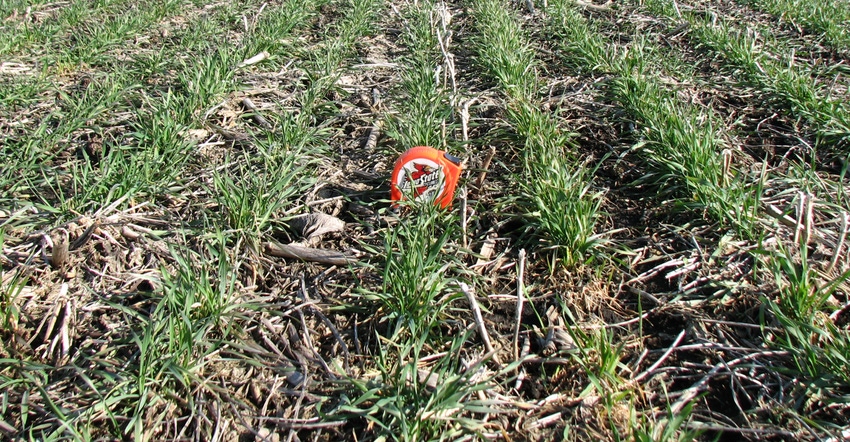September 18, 2018

Iowa farmers using cover crops and not receiving state or federal cost share as an incentive to plant them should consider participating in a state program that provides a $5-per-acre premium reduction on crop insurance. Farmers who plant cover crops this fall may be eligible for the reduction on their crop insurance in 2019.
This is the second year of the program, aimed at increasing acres of cover crops in the state. More than 700 farmers participated in this demonstration project last fall, using cover crops on nearly 170,000 acres in the project’s inaugural year.
“It’s great to see the level of interest in this new and innovative program, both by farmers here in Iowa and by other states interested in using it as a model. We see this incentive as a way to scale up cover crop adoption by reaching a broader group of farmers and landowners,” says Iowa Secretary of Agriculture Mike Naig.
Farmers and landowners interested in certifying eligible land in the program can go online to apply.
Streamlining sign-up
Trying to streamline the sign-up process, the Iowa Department of Ag is developing a new online sign-up format. At this time (mid-September), sign up is not open, but interested participants can get more background on the program to help plan their cover crop seeding this fall. Farmers are encouraged to wait to apply for the cost share until their cover crop seeding has been completed.
Applications will be taken until Jan. 15. Cover crop acres currently enrolled in state or federal programs are not eligible for the crop insurance premium reduction program.
“We recently announced that the popular statewide cost-share program, which provides assistance to farmers using cover crops, is closed for this fall. The cost-share funding for this year’s program has been used up. But this crop insurance incentive program offers another option for growers who were limited in acres or were not able to receive funding through the regular cost-share program,” Naig says.
The premium reduction will be available for fall-planted cover crops with a spring-planted cash crop. Some policies may be excluded, such as Whole-Farm Revenue Protection or those covered through written agreements. Participating farmers must follow all existing good farming practices required by their policy and work with their insurance agent to maintain eligibility.
The Iowa Department of Agriculture and Land Stewardship worked with USDA’s Risk Management Agency, which oversees the federal crop insurance program, to establish the three-year demonstration project.
Crop insurance is an integral part of the farm safety net that helps farmers manage the risks associated with growing a crop and provides protection for farmers impacted by severe weather and challenging growing conditions. Cover crops can help prevent erosion and improve water quality and soil health, among other benefits.
Background on water initiative
The Iowa Water Quality Initiative was established in 2013 to help implement the Nutrient Reduction Strategy, a science and technology-based approach to achieving a 45% reduction in nitrogen and phosphorus losses to our waters.
The strategy brings together both point sources, such as municipal wastewater treatment plants and industrial facilities, and nonpoint sources, including farm fields and urban stormwater runoff, to address these issues.
The Water Quality Initiative seeks to harness the collective ability of both private and public resources and organizations to deliver a clear and consistent message to stakeholders to reduce nutrient loss and improve water quality.
The initiative is seeing results, Naig says. This fall, 2,800 farmers invested an estimated $9 million in funding to match $5 million in state cost-share funds to adopt cover crops, no-till or strip till, or use a nitrification inhibitor when applying fall fertilizer. Participants include more than 1,000 farmers using a practice for the first time and nearly 1,800 past users who are trying cover crops again and are receiving a reduced rate of cost share.
Source: Iowa Department of Agriculture
You May Also Like




